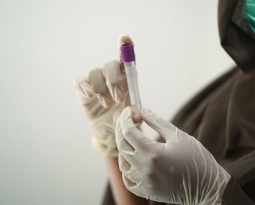Utah Patent of the Month – April 2023
Clinicians have been on the search for antimicrobial agents capable of reducing wound burden without inciting cytotoxic side effects. Between the risk of infection and the advancing epidemic of bacterial resistance to antibiotic therapies, there is a dire need for antimicrobial agents used to treat cutaneous burns and wounds. PolarityTE Inc, a biotechnology company specializing in regenerative medicine, is working to address this issue through its research on LGR expressing cells and multi-dimensional supports.
Recent progress in mesenchymal and adipose-derived stem cell isolation and transplantation has led researchers to study how these cells improve healing and alter gene expression in each stage of wound healing. Epithelial stem cells, which develop from the primordial ectoderm, also have a potential role in cutaneous wound healing, and the transplantation and application of isolated LGR4, LGR5 and LGR6 expressing epithelial stem cells can potentially alter wound healing gene expression.
However, severe full-thickness damage (i.e. third degree burns) to the skin can destroy LGR-expressing epithelial stem cell populations, leaving tissues incapable of producing a viable and self-sustaining epithelial compartment. Without proper interdependence between progenitor and stem cell populations, extracellular matrix scaffolding elements and substrates, and the necessary interaction between cellular entities and substrates, it is difficult to generate a functional multi-tissue construct that can compete with native tissues.
To address this issue, PolarityTE has developed a minimally polarized micro-aggregate multi-cellular composition that includes isolated living LGR-expressing cells and a multi-dimensional support selected from the group consisting of scaffolding, collagen, and matrices. This composition provides the natural cellular micro-aggregate architecture needed to assemble functional polarized tissues, promoting the proper interdependence between progenitor and/or stem cell populations, extracellular matrix scaffolding elements and substrates, and the necessary interaction between cellular entities and substrates.
PolarityTE’s composition is a significant step towards developing a new class of topical antimicrobial agents for use in cutaneous burns and wounds, and it has the potential to revolutionize tissue engineering, cell therapy, regenerative medicine, and tissue healing applications. While current tissue substitutes and grafts provide limited benefits and are often expensive, the composition developed by PolarityTE has the potential to develop multi-compartment tissue regeneration and bone and muscle reconstruction that could compete with native tissues. With further research and development, this composition could have a significant impact on the healthcare industry, providing better options for wound care and promoting faster, more effective healing.
Are you developing new technology for an existing application? Did you know your development work could be eligible for the R&D Tax Credit and you can receive up to 14% back on your expenses? Even if your development isn’t successful your work may still qualify for R&D credits (i.e. you don’t need to have a patent to qualify). To find out more, please contact a Swanson Reed R&D Specialist today or check out our free online eligibility test.
Who We Are:
Swanson Reed is one of the U.S.’ largest Specialist R&D tax advisory firms. We manage all facets of the R&D tax credit program, from claim preparation and audit compliance to claim disputes.
Swanson Reed regularly hosts free webinars and provides free IRS CE and CPE credits for CPAs. For more information please visit us at www.swansonreed.com/webinars or contact your usual Swanson Reed representative.

















